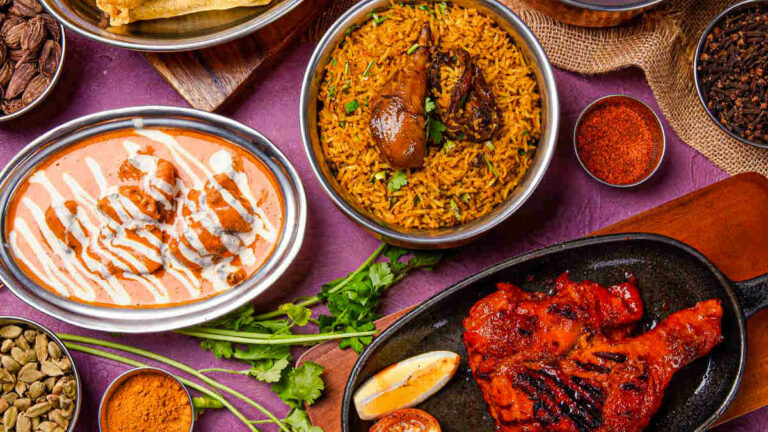Introduction: Exploring Indian Cuisine
Indian cuisine is one of the most diverse and flavorful in the world. From aromatic curries to spicy street food, the cuisine of India is as varied as the country’s geography, culture, and history. With a rich culinary tradition dating back thousands of years, Indian cuisine has evolved over time to include a wide variety of spices, ingredients, and cooking styles.
The Diversity of Indian Cuisine
One of the most striking characteristics of Indian cuisine is its diversity. With over 1.3 billion people and 29 states, India is home to a wide range of regional cuisines, each with its unique flavors, ingredients, and cooking techniques. From the fiery curries of the North to the coconut-based dishes of the South, Indian cuisine offers a wealth of culinary experiences that are sure to delight any food lover.
Regional Variations in Spice Levels and Ingredients
One of the biggest differences between regional Indian cuisines is the use of spices and ingredients. While certain spices such as cumin, turmeric, and coriander are used throughout the country, the types and amounts of spices used can vary widely. For example, North Indian cuisine is known for its use of garam masala, a spice blend that typically includes cinnamon, cloves, cardamom, and black pepper. In contrast, South Indian cuisine often features more coconut-based dishes and uses spices such as curry leaves, mustard seeds, and fenugreek.
North vs. South: Contrasting Flavors and Dishes
The differences between North and South Indian cuisine go beyond just spices and ingredients. In the North, dishes tend to be richer and heavier, with a focus on meats and dairy products such as ghee and paneer. In contrast, South Indian cuisine is generally lighter and more vegetarian-friendly, with a focus on rice, lentils, and coconut-based dishes. Some of the most popular North Indian dishes include butter chicken, biryani, and naan, while South Indian favorites include dosas, idlis, and sambar.
East vs. West: Differences in Preparation Techniques
In addition to North vs. South, Indian cuisine can also be divided into East and West. Eastern Indian cuisine, which includes the states of West Bengal, Odisha, and Assam, is known for its use of mustard oil, fish, and seafood. In contrast, the cuisine of Western India, which includes the states of Gujarat, Maharashtra, and Rajasthan, tends to be more vegetarian-friendly, with a focus on lentils, beans, and flatbreads such as roti and paratha.
Conclusion: The Richness of Indian Cuisine
In conclusion, Indian cuisine is a rich and diverse melting pot of flavors, ingredients, and cooking techniques. With a wide variety of regional cuisines to choose from, there’s something for everyone in the world of Indian food. Whether you’re a fan of spicy curries, flavorful biryanis, or vegetarian-friendly dosas, Indian cuisine is sure to tantalize your taste buds and leave you wanting more. So, next time you’re looking for a culinary adventure, consider exploring the rich and varied world of Indian cuisine.

